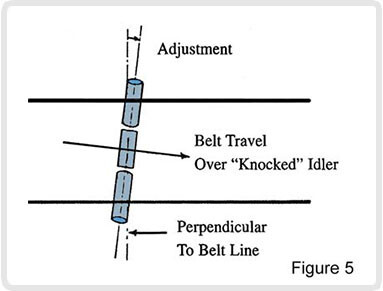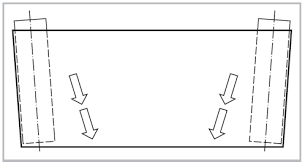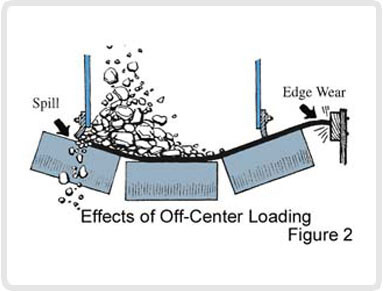Conveyor Belt Troubleshooting
Common Causes of Belt Failure:
1. Seized or Worn Rollers/Idlers
2. Pulley and Drive Failures
3. Belt Contamination - Oils, Chemicals, or other foreign materials.
4. Inadequate Belt Tension - Slippage, stretching, mistracking.
Daily Conveyor Belt System Maintenance Checklist
[ ] Inspect belt tracking and realign if drifting due to aggregate buildup.
[ ] Check belt tension; adjust to prevent slippage on incline under load.
[ ] Examine belt surface for wear, cuts, or gouging from sharp aggregate.
[ ] Clean dust and debris from pulleys, idlers, and return rollers.
[ ] Inspect drive pulley lagging for wear or contamination.
[ ] Check idlers and rollers for free rotation; replace if seized or noisy.
[ ] Ensure belt cleaners/scrapers are in contact and not worn out.
[ ] Verify that chute and loading points are centered and not overloading one side.
[ ] Inspect structure for material spillage and clear as needed.
[ ] Lubricate bearings and moving parts per OEM guidelines (use high-temp grease if required).
[ ] Check motor temperature and listen for abnormal noises.
[ ] Ensure all guards, covers, and emergency stop mechanisms are intact and functional.
[ ] Document findings and any corrective actions taken.
Tracking/Training Belt Procedures
Training or tracking the belt on your radial stacker or conveyor system is a process of adjusting idlers, pulleys and loading conditions in a manner which will correct any tendency of the belt to run other than centrally. The basic rule which must be kept in mind when tracking a conveyor belt is simple, "THE BELT MOVES TOWARD THAT END OF THE ROLL/IDLER IT CONTACTS FIRST."
Conveyor Belt Tracking Guide
1. Understand Belt Tracking Basics
-
-
- Tracking means aligning the belt to run straight on the conveyor.
- Most belts naturally want to move toward the tighter side of the system.
-

2. Common Causes of Belt Misalignment
-
-
- Uneven or improper tension
- Worn or misaligned rollers/pulleys
- Build-up of material on rollers or belt
- Poor belt splicing
- Uneven load distribution
-
3. Step-by-Step Belt Tracking Procedure
Step 1: Inspect the System
-
-
- Check for material buildup on pulleys or rollers.
- Inspect belt condition (no tears, frays, or stiff edges).
- Ensure all pulleys and rollers are square and level.
-

Step 2: Tension the Belt Properly
-
-
- Set even tension across both sides.
- Over-tensioning can cause stretching; under-tensioning can cause slippage and misalignment.
-
Step 3: Adjust the Tail Pulley First
-
-
- To move the belt left, tighten the right side of the tail pulley.
- To move the belt right, tighten the left side of the tail pulley.
- Make small adjustments (1/4 turn at a time).
-
Step 4: Observe and Adjust Drive Pulley (if needed)
-
-
- Typically used as a fine adjustment if tail pulley doesn't solve tracking.
- Same principle applies: the belt moves toward the tighter side.
-
Step 5: Use Return Rollers for Fine-Tuning
-
-
- Adjust return idlers (especially training idlers) to help guide the belt back to center.
- Self-aligning idlers can help automatically correct tracking.
-

5. Preventive Measures
-
-
- Keep the belt and pulleys clean.
- Schedule regular inspections.
- Use crowned pulleys or tracking guides (v-guides) if belt misalignment is persistent.
-
Common Mistakes to Avoid
-
-
- Making large adjustments too quickly.
- Adjusting too many points at once.
- Ignoring roller/pulley alignment.
- Failing to lock components back into place.
-
